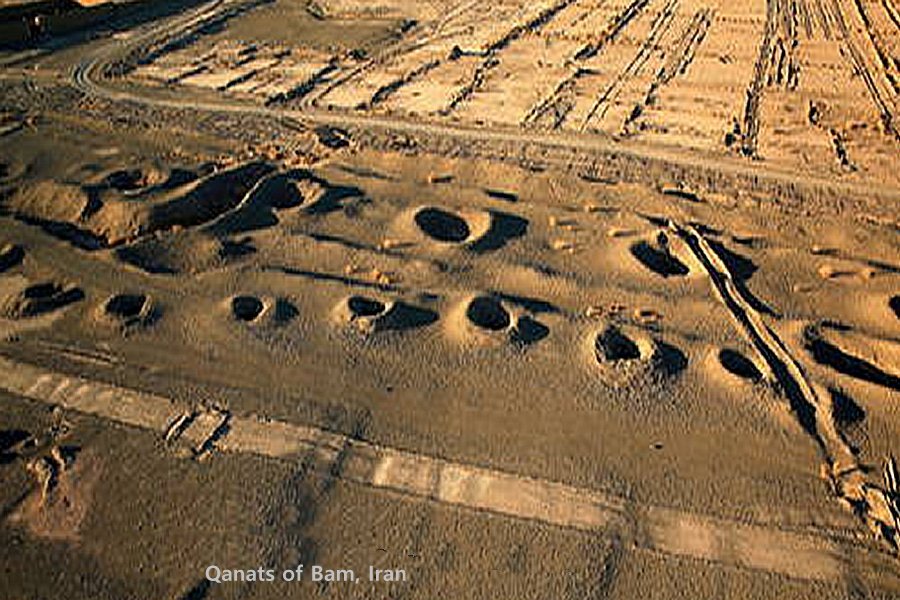Qanats: Ancient 3,000-Year-Old Underground Irrigation Canals Invented By People Of Persia
A. Sutherland - AncientPages.com - One of the ancient times' most amazing technologies is underground irrigation canals known as "qanats."
The qanats transported water from water wells to the surface for irrigation and drinking, and they could do it over long distances.
The technology- dated back more than 3000 years - was developed in ancient Persia. In the early part of the first millennium BC, Persians began to construct complex tunnel systems called 'qanats' for extracting groundwater in the dry mountain basins of present-day Iran. Later, the qanats gradually spread, and many of them are continuously in use stretching from China on the east to Morocco on the west, and even to both American continents. In fact, about 20,000 other qanats are still in use.
Qanat tunnels - often several kilometers long - were hand-dug, and their size was just large enough to fit the person doing the digging. Qanat builders sank vertical shafts along the tunnel at intervals of 20 to 30 meters. This space was needed to remove excavated material and to provide ventilation and access for future repairs.
The ancient Persian qanat water delivery system proved to have many apparent advantages. For example, it limited water loss from seepage and evaporation, and no pumps were necessary because the qanat system could function based entirely on gravity.
One of the longest known qanats in the world that is 70 km long is located in Iran. The qanat in the city of Gonabad ("Qanats of Gonabad"), which is the oldest and largest, is part of the Unesco World Heritage List since 2007. Built between 700 and 500 BC by the Achaemenid Empire in what is now Gonabad, Razavi Khorasan Province, Iran, the complex contains 427 water wells with a total length of 33,113 meters (20.575 mi).
Today, Gonabad's qanat provides water to more than 40,000 people.
With the conquests of the Persians, the qanats expanded from Egypt to Bactria (in modern times, certain parts of Tajikistan, northern Afghanistan, and southern Uzbekistan.
Many others can be found in the north of Africa, in the Middle East, China India, as well as in Sicily, in the southern parts of Spain and in the Canaries.
With this ancient technology, the Persians could build a set of vertical wells. It was important to dig them on a hill to reach a source of underground water. Then, the secondary wells connected the tunnel with the surface and finally, irrigation channels carried the water to respective areas.
The qanats significantly contributed to the prosperity and good life of the Persian people in regions exposed to bad weather conditions.
The vertical wells allowed access and help to ventilate the entire system. The wells are connected to a drainage gallery that is somewhat inclined, which helps water to descend in the form of waterfalls.
The qanats still create a reliable supply of water for human settlements and irrigation in hot, arid, and semi-arid climates.
Written by – A. Sutherland AncientPages.com Staff Writer
Updated on November 5, 2022
Copyright © AncientPages.com All rights reserved. This material may not be published, broadcast, rewritten or redistributed in whole or part without the express written permission of AncientPages.com
More From Ancient Pages
-
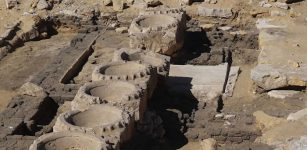 4,500-Year-Old Lost ‘Sun Temple’ Dedicated To God Ra Unearthed In Abu Gorab Necropolis
Archaeology | Aug 4, 2022
4,500-Year-Old Lost ‘Sun Temple’ Dedicated To God Ra Unearthed In Abu Gorab Necropolis
Archaeology | Aug 4, 2022 -
 Strange Ancient Underwater Yellow Brick Road Discovered Of The Hawaiian Islands
News | May 11, 2022
Strange Ancient Underwater Yellow Brick Road Discovered Of The Hawaiian Islands
News | May 11, 2022 -
 Cuchulainn: Irish Mythical Hero And His Cruel Magical Spear Gae Bolg
Celtic Mythology | Jun 6, 2017
Cuchulainn: Irish Mythical Hero And His Cruel Magical Spear Gae Bolg
Celtic Mythology | Jun 6, 2017 -
 Ancient Jaintia Kingdom And The Garden Of Monoliths And Dolmens
Featured Stories | Nov 8, 2016
Ancient Jaintia Kingdom And The Garden Of Monoliths And Dolmens
Featured Stories | Nov 8, 2016 -
 Archaeological Evidence Ancient Egyptians Visited South America
Civilizations | Jan 7, 2020
Archaeological Evidence Ancient Egyptians Visited South America
Civilizations | Jan 7, 2020 -
 Unraveling the mystery of the Rhynie Man
News | Aug 24, 2015
Unraveling the mystery of the Rhynie Man
News | Aug 24, 2015 -
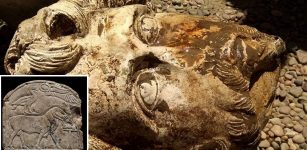 Ancient Shrine Of God Osiris-Ptah Neb And Rare Bust Of Emperor Marcus Aurelius Discovered In Egypt
Archaeology | Apr 28, 2018
Ancient Shrine Of God Osiris-Ptah Neb And Rare Bust Of Emperor Marcus Aurelius Discovered In Egypt
Archaeology | Apr 28, 2018 -
 Ancient City Filled With Treasures May Be Hidden Underground In South America
Featured Stories | Jul 20, 2018
Ancient City Filled With Treasures May Be Hidden Underground In South America
Featured Stories | Jul 20, 2018 -
 Secrets Of Ninja Swords – Favorite Weapon Of The Shinobi
Featured Stories | Aug 13, 2018
Secrets Of Ninja Swords – Favorite Weapon Of The Shinobi
Featured Stories | Aug 13, 2018 -
 Ancient Secrets Of The Amazon Jungle – Dangerous Expeditions And Hidden Treasures – Part 1
Featured Stories | Mar 1, 2019
Ancient Secrets Of The Amazon Jungle – Dangerous Expeditions And Hidden Treasures – Part 1
Featured Stories | Mar 1, 2019 -
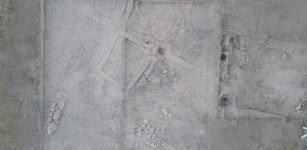 9,600-Year-Old Permament Settlement And Daily Tools Discovered In Turkey
Archaeology | Sep 2, 2022
9,600-Year-Old Permament Settlement And Daily Tools Discovered In Turkey
Archaeology | Sep 2, 2022 -
 Kallikantzaroi: Naughty Nocturnal Goblins Emerge From Underground Only During Twelve Days Of Christmas
Christmas Traditions | Dec 17, 2019
Kallikantzaroi: Naughty Nocturnal Goblins Emerge From Underground Only During Twelve Days Of Christmas
Christmas Traditions | Dec 17, 2019 -
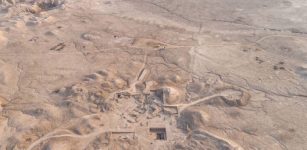 4,500-Year-Old Sumerian Palace Discovered In The Ancient City Of Girsu
Archaeology | Feb 20, 2023
4,500-Year-Old Sumerian Palace Discovered In The Ancient City Of Girsu
Archaeology | Feb 20, 2023 -
 3,000-Year-Old African Musical Instrument Can Help Modern Medicine
Archaeology | Sep 19, 2018
3,000-Year-Old African Musical Instrument Can Help Modern Medicine
Archaeology | Sep 19, 2018 -
 Tullus Hostilius: Warrior King Of Rome, Who Succeeded Numa Pompilius And Feared Prophecies
Featured Stories | Mar 6, 2019
Tullus Hostilius: Warrior King Of Rome, Who Succeeded Numa Pompilius And Feared Prophecies
Featured Stories | Mar 6, 2019 -
 The Opening Of Pandora’s Box May Have Been A Real Event
Featured Stories | Jun 22, 2021
The Opening Of Pandora’s Box May Have Been A Real Event
Featured Stories | Jun 22, 2021 -
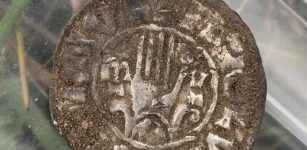 Hoards Of Viking Coins Discovered On The Island Of Saaremaa
Archaeology | Oct 7, 2019
Hoards Of Viking Coins Discovered On The Island Of Saaremaa
Archaeology | Oct 7, 2019 -
 Stunning Facial Reconstruction Of Saint Ludmila’s Sons Of The Czech Royal Premyslid Dynasty
Archaeology | Mar 8, 2021
Stunning Facial Reconstruction Of Saint Ludmila’s Sons Of The Czech Royal Premyslid Dynasty
Archaeology | Mar 8, 2021 -
 Mysterious Anomaly In Earth’s Magnetic Field Documented On 3,000-Year-Old Mesopotamian Bricks
Archaeology | Dec 18, 2023
Mysterious Anomaly In Earth’s Magnetic Field Documented On 3,000-Year-Old Mesopotamian Bricks
Archaeology | Dec 18, 2023 -
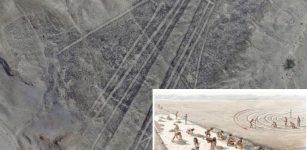 Dozens Of Giant ‘Lost’ Nazca Geoglyphs Unearthed By Drones In Peru
Archaeology | Apr 7, 2018
Dozens Of Giant ‘Lost’ Nazca Geoglyphs Unearthed By Drones In Peru
Archaeology | Apr 7, 2018

